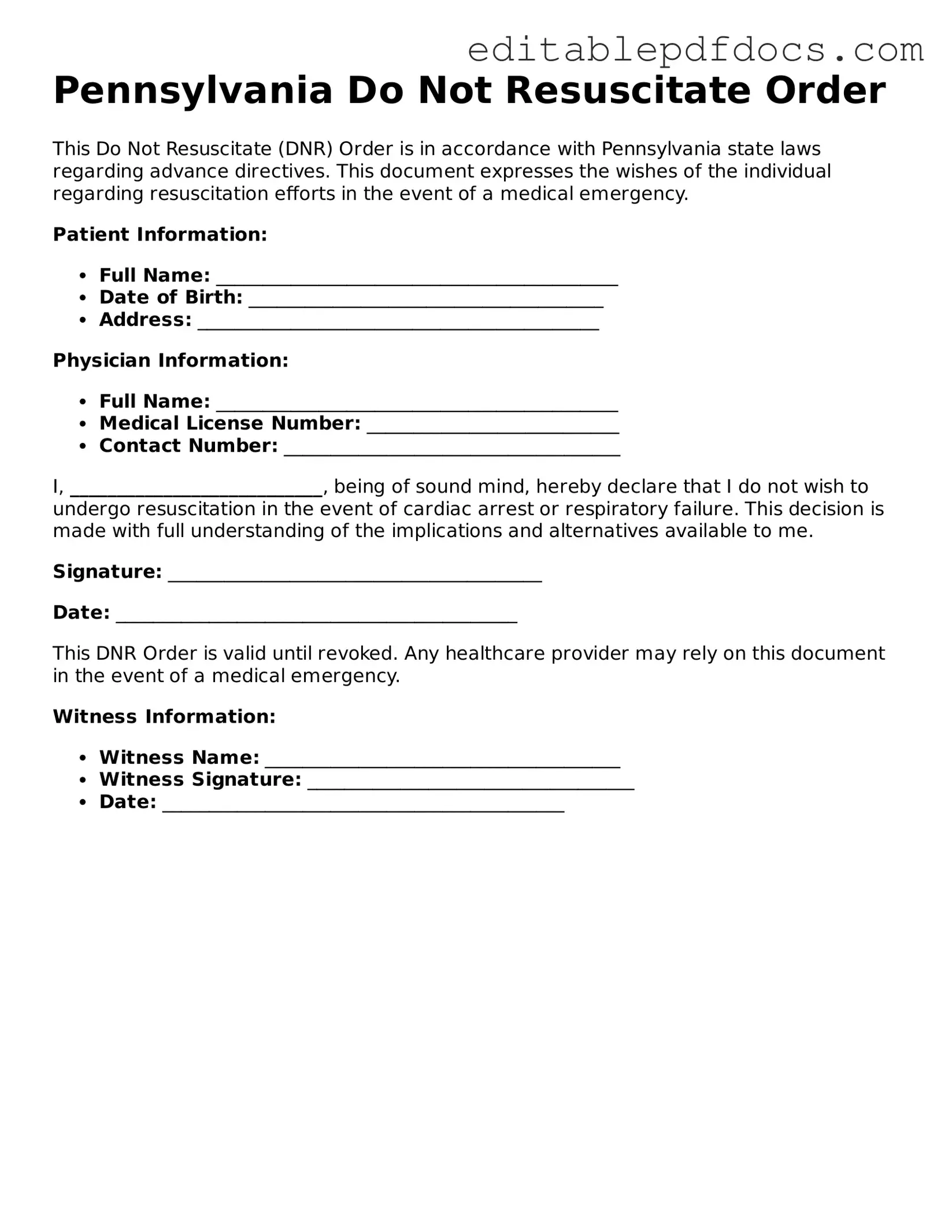Filling out a Do Not Resuscitate (DNR) Order form in Pennsylvania is a critical step for individuals who wish to communicate their healthcare preferences. However, many people make mistakes that can lead to confusion or even unintended medical interventions. Understanding these common errors can help ensure that your wishes are respected.
One frequent mistake is not discussing the DNR decision with family members or healthcare providers beforehand. Open conversations about end-of-life care can clarify intentions and reduce misunderstandings. When loved ones are not informed, they may struggle to honor the individual’s wishes during a medical crisis.
Another common error is failing to sign and date the form. A DNR Order is not valid unless it is properly signed by the patient or their legal representative. Without a signature, medical professionals may not recognize the order, leading to unwanted resuscitation efforts.
Some individuals overlook the importance of having the DNR form witnessed. In Pennsylvania, the law requires that the form be signed in the presence of a witness. If this step is neglected, the order may be rendered invalid, causing distress in critical moments.
Inaccurate information can also pose significant problems. It is essential to ensure that personal details, such as name and date of birth, are filled out correctly. Errors in this information can lead to confusion about the identity of the patient and may result in inappropriate medical responses.
Many people forget to provide copies of the DNR Order to their healthcare providers. Simply completing the form is not enough; sharing it with doctors, hospitals, and emergency medical services is crucial. Without copies on file, there is a risk that medical personnel may not be aware of the patient’s wishes.
Another mistake involves misunderstanding the scope of the DNR Order. Some individuals believe that a DNR means no medical treatment whatsoever. However, a DNR specifically addresses resuscitation efforts only. It is important to clarify other aspects of care, such as pain management and comfort measures.
Some patients neglect to review and update their DNR Orders regularly. Life circumstances can change, and so can one’s preferences regarding end-of-life care. It is advisable to revisit the form periodically to ensure it still reflects the individual’s wishes.
People may also forget to discuss the DNR Order with their emergency contacts. It is vital that those closest to the individual are aware of the DNR status. This knowledge can help avoid conflict and confusion during emergencies.
Lastly, individuals sometimes fail to consider the implications of a DNR Order on their overall healthcare plan. It is essential to integrate the DNR with other advance directives, such as a living will or healthcare power of attorney, to create a comprehensive approach to end-of-life care.
By being aware of these common mistakes, individuals can take proactive steps to ensure that their DNR Orders are filled out correctly and that their wishes are honored. Clear communication and careful attention to detail can make all the difference in a critical situation.
